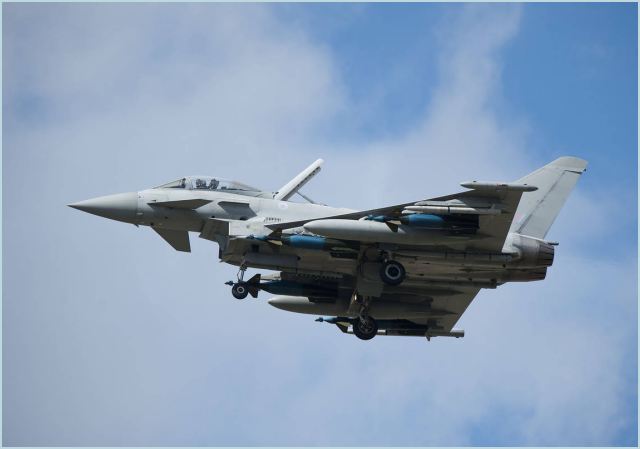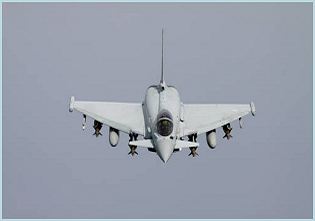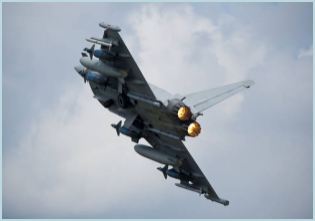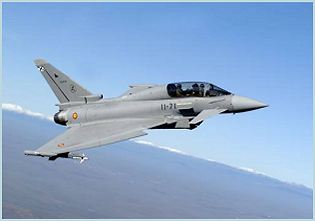Eurofighter Typhoon
| a | ||||||||||||||||||||||
|
Eurofighter Typhoon multirole combat aicraft
|
||||||||||||||||||||||
|
|
||||||||||||||||||||||
|
|
||||||||||||||||||||||
|
The Eurofighter Typhoon is a twin-engine multirole combat aircraft, designed and built by a consortium of three aviation companies: EADS, Alenia Aeronautica and BAE Systems; working through a holding company, Eurofighter GmbH. Established in 1994, the Eurofighter consortium brought together the brightest minds in European aerospace within the leading companies of each of the partner nations in order to create a world class weapon system. Eurofighter Typhoon has propelled European manufacturing, engineering and technology to the forefront of international capabilities and has ensured the continued independence of European aerospace. The consortium prides itself on the ability to effectively work along International partners, evident in the strong relationships it holds with its export customers Austria and the Kingdom of Saudi Arabia. The industrial benefits gained by each investing nation goes beyond that of initial. The Eurofighter Typhhon is used actually by Austria, Germany, Italy, Saudi Arabia, Spain and United Kingdom. The Eurofighter Typhoon can undertake all the following missions and roles, as air superiority and airspace policing, Air-to-Surface (including air interdiction, close air support, maritime attack, suppression and destruction of enemy Air Defences) and reconnaissance. Due to the flexibility of the design, future missions and rolescan be readily accommodated. This flexibility is based on advanced avionics, sensors and weapon integration techniques that are unique to this aircraft. Eurofighter Typhoon is a genuine swing-role aircraft, with the ability to carry out several roles during a mission, shifting between Air-to- Surface and Air-to-Air roles. One aircraft for all missions reducing costs, increasing effectiveness and enhancing interoperability with allied Air Forces. |
||||||||||||||||||||||
| Variants | ||||||||||||||||||||||
|
Tranche 1
- Block 1: Initial operational capability and basic air defence capability. - Block 2: Initial air-to-air capabilities. - Block 2B: Full air-to-air capabilities. - Block 5: Full operational capability (FOC) by combining existing air-to-air role with air-to-ground capabilities. Tranche 2 - Block 8: New mission computers required for the integration of future weapons such as Meteor, Storm Shadow and Taurus. (Differences in the build to Tranche 1 related to changes in production technology or obsolescence). - Block 10: Software: EOC 1 (advanced multi-role step 1) AIM-120C-5 AMRAAM, IRIS-T digital. A2G: GBU-24, GPS-controlled weapons, ALARM, Paveway III & IV, Rafael Litening III - Block 15: Software: EOC 2 (advanced multi-role step 2) A2A Meteor A2G: TAURUS, Storm Shadow, Brimstone Tranche 3 These aircraft will have interfaces for possible future improvements, but will be delivered at a Tranche 2 level of capability.The Indian Navy has made a request for information for a carrier based variant of the Eurofighter. In this contest it will once again be up against the Rafale, which split from the Eurofighter project over the need for a carrier based variant. In February 2011, BAE debuted a navalized Typhoon in response to the Indian tender. The model offered is STOBAR (Short Take Off But Arrested Recovery) capable corresponding to the Indian Navy's future Vikrant class aircraft carrier. The changes needed to enable the Typhoon to launch by ski-jump and recover by arrestor hook added about 500 kg to the airframe. |
||||||||||||||||||||||
| Technical Data | ||||||||||||||||||||||
| Design | ||||||||||||||||||||||
|
Due to its foreplane/delta low drag configuration and high thrust-to-weight ratio, Eurofighter Typhoon exhibits exceptional acceleration, instantaneous and sustained turn rate performance both subsonic and supersonic, coupled with excellent airfield performance. Using the latest control technology with a high degree of aerodynamic instability, and by extensive use of carbon composite, the resulting airframe and engine are some 10- 20% smaller and 30% lighter than its predecessors.
|
||||||||||||||||||||||
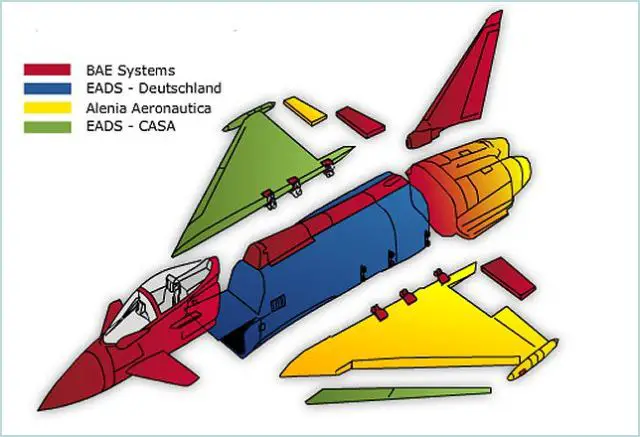 |
||||||||||||||||||||||
| Avionic | ||||||||||||||||||||||
|
The cockpit and Human Machine Interface (HMI) have been designed and fully tested to provide low pilot workload even in the most adverse mission and threat scenarios predicted. Other features such as Direct Voice Input/Output (DVI/O) associated with Hands On Throttle And Stick (HOTAS) control functionality have been implemented on the Eurofighter Typhoon to drastically reduce the pilot’s workload. Voice Throttle And Stick (VTAS) enables singleseat operations even in the most demanding Air-to-Air, Air-to-Surface, and swing-role missions. |
||||||||||||||||||||||
| Propulsion | ||||||||||||||||||||||
|
Eurofighter Typhoon is equipped with 2 EUROJET EJ200 engines to increase safety in peacetime and redundancy in war. The high reliability and subsequent availability ensure low operational costs and high safety.
The EJ200 has been designed with inherent growth potential up to 15%. Enhancements in the compression system and latest innovations in core engine technology could deliver up to 30% increased power. This performance improvement may also be traded for life cycle cost improvements, maintaining current thrust levels. This flexibility is enabled by the advanced digital engine control and monitoring unit (DECMU), fully exploiting the advantages of the enhanced engine in line with operational requirements. |
||||||||||||||||||||||
| Armament | ||||||||||||||||||||||
|
The internally mounted Mauser BK27mm gun is a revolver gun system with a linkless-closed ammunition feed system. The Eurofighter Typhoon has 13 hard points for weapon carriage, four under each wing and five under the fuselage. An armament control system (ACS) manages weapons selection and firing and monitors weapon status.
Depending on role, the fighter can carry the following mix of missiles: - Air-superiority - six BVRAAM (beyond visual range) / AMRAAM air-to-air missiles on semi-recessed fuselage stations and two ASRAAM short-range air-to-air missiles on the outer pylons - Air interdiction - four AMRAAM, two ASRAAM, two cruise missiles and two anti-radar missiles (ARM) - SEAD (suppression of enemy air defences) - four AMRAAM, two ASRAAM, six anti-radar missiles - Multirole - three AMRAAM, two ASRAAM, two ARM and two GBU-24 Paveway III/IV - Close air support - four AMRAAM, two ASRAAM, 18 Brimstone anti-armour missiles - Maritime attack - four AMRAAM, two ASRAAM, six anti-ship missiles |
||||||||||||||||||||||
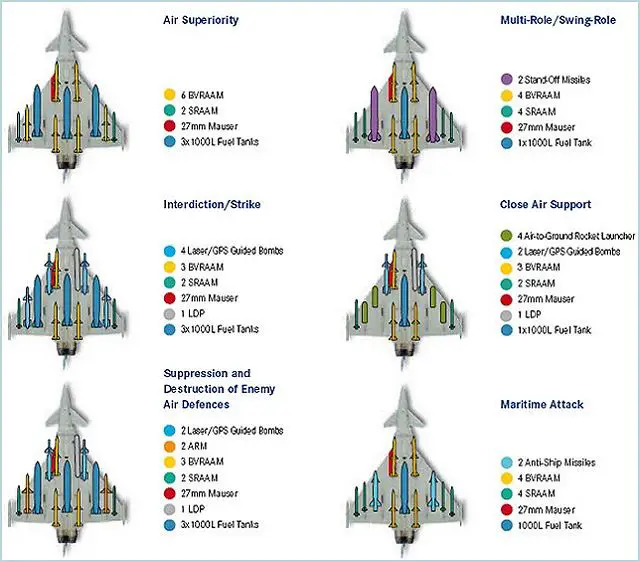 |
||||||||||||||||||||||
| Accessories | ||||||||||||||||||||||
|
MIDS – Multifunction Information and Distribution System
MIDS is a communication system that allows all elements – where Eurofighter Typhoon is one – of a command and control system to share the same information, and contribute data whenever required. Over huge ranges, and in any direction, the Eurofighter Typhoon pilot can listen to, and see, all relevant data on friendly and enemy forces, airfields, command decisions or mission changes. Eurofighter Typhoon will have the capacity to absorb all of this information and then process it through the sensor fusion capability to present a clear and relevant battle space picture to the pilot. Electro-Optic Targeting System Autonomous operations for Eurofighter Typhoon will be greatly enhanced by the addition of on-board target detection, recognition and identification, using the latest EO sensor technology. This is complemented by on-board laser tracking supporting target designation for self or third party operations. Future generations of targeting and tracking sensors will be readily integrated into Eurofighter Typhoon through the evolving avionics and weapon system architecture. As with the IRST/FLIR, multi-spectral operations will be key to future operational capability. Autopilot The Eurofighter Typhoon autopilot is designed for both cruising and to free the pilot in tactical situations. The autopilot provides basic track, heading, altitude and airspeed modes, and allows the pilot to fly optimum attack profiles automatically. In fact, advanced modes such as auto-climb, autoattack, and auto-approach are available. The autopilot is an integrated part of the pilot’s tactical control. Cockpit At all stages of the design of the Eurofighter Typhoon cockpit, the needs of the single-seat pilot have been paramount. High workload situations have been analysed to establish priorities and to automate tasks. The priorities of head-in and head-out operations were established, and displays and moding designed so that only necessary information is presented to the pilot. General Features Five major display surfaces: three Multi-function Head Down Displays (MHDD), a Head-Up Display (HUD) and a Helmet Mounted Display (HMD), provide the pilot with all the tactical information he needs for all stages of his mission. Night Vision Goggles (NVGs) have been integrated in the fully NVG compatible cockpit. Voice, Throttle And Stick (VTAS) technology gives the pilot optimum intuitive controls and enhances the efficiency of the single seat operation. |
||||||||||||||||||||||
| Specifications | ||||||||||||||||||||||
|
||||||||||||||||||||||
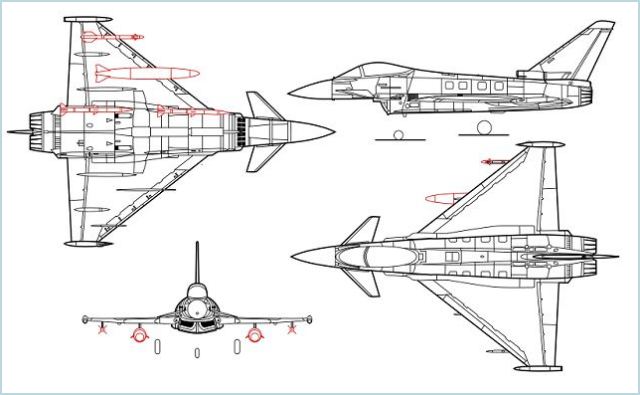 |
||||||||||||||||||||||
|
||||||||||||||||||||||



























